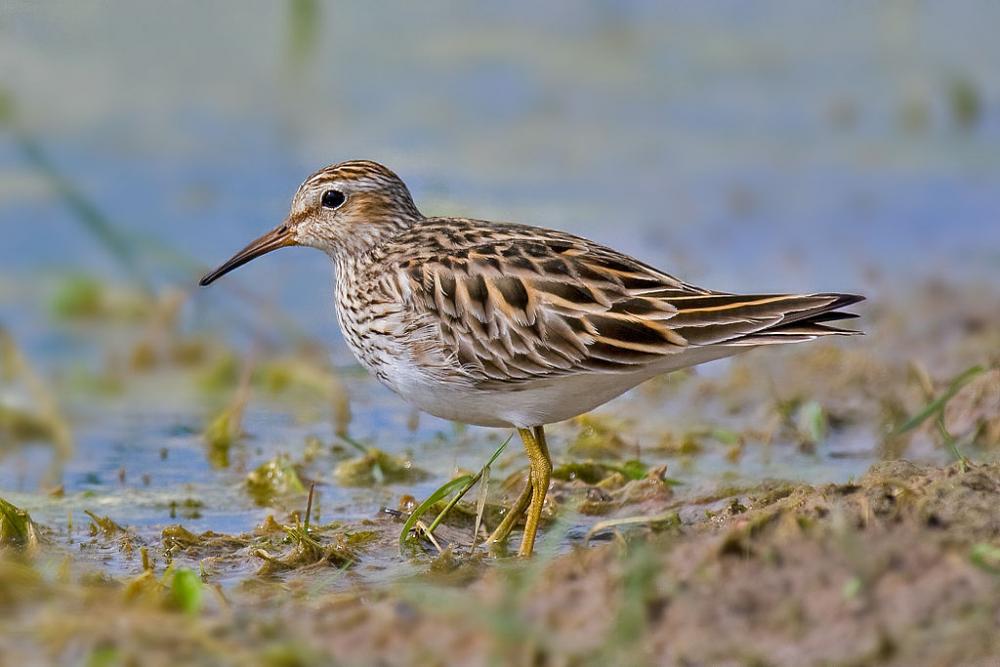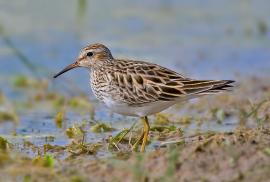Guide to Boreal Birds
Overview
In the days when shorebirds were shot as game, hunters called this species the "Grass Snipe," referring to its liking for grassy meadows, or "Krieker," because of its grating snipe-like flight call. During the short Arctic breeding season food is at a premium. To ensure an adequate supply for the young, male Pectoral Sandpipers depart for the south before the eggs hatch, so they don't compete for food with the mothers and their chicks. Then the adult females leave, too, and in the last few weeks the young have the tundra to themselves.
Description
9" (23 cm). A chunky, somewhat short-legged wader with heavily streaked breast sharply delineated from unmarked white belly. Legs yellow. In flight, wings dark with no prominent stripe.
Voice
A dull krrrrp.
Nesting
4 buff-white eggs, marked with brown, in a slight depression in boggy tundra.
Habitat
Breeds on tundra; during migration visits moist grassy places, grass-lined pools, golf courses and airports after heavy rains, and salt creeks and meadows.
Range/Migration
Breeds on Arctic coasts from Alaska east to Hudson Bay. Migrates along Atlantic and Pacific coasts and through interior. Winters in southern South America.



